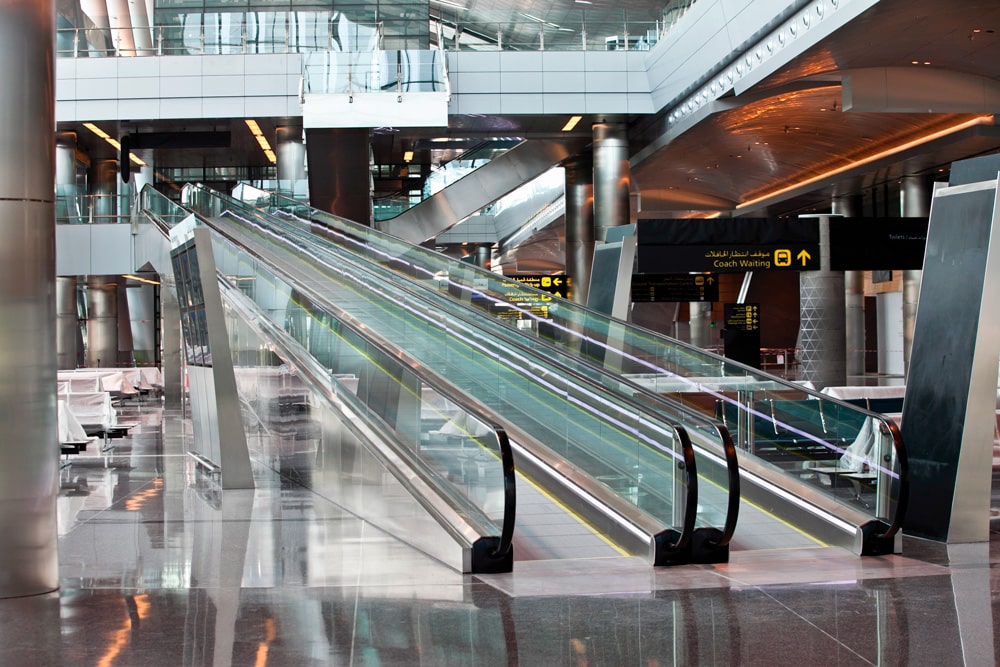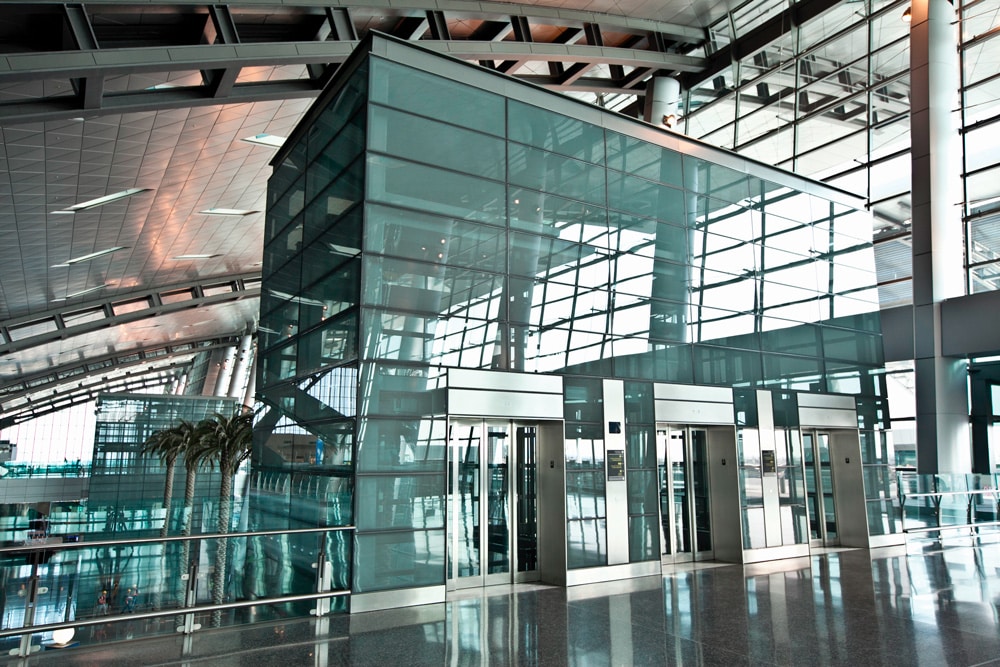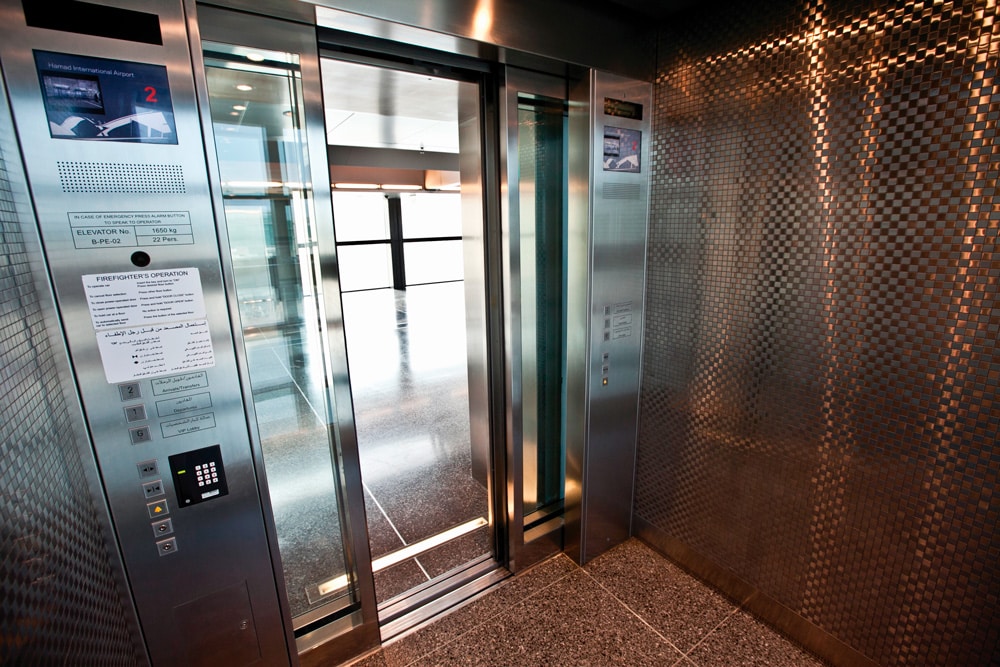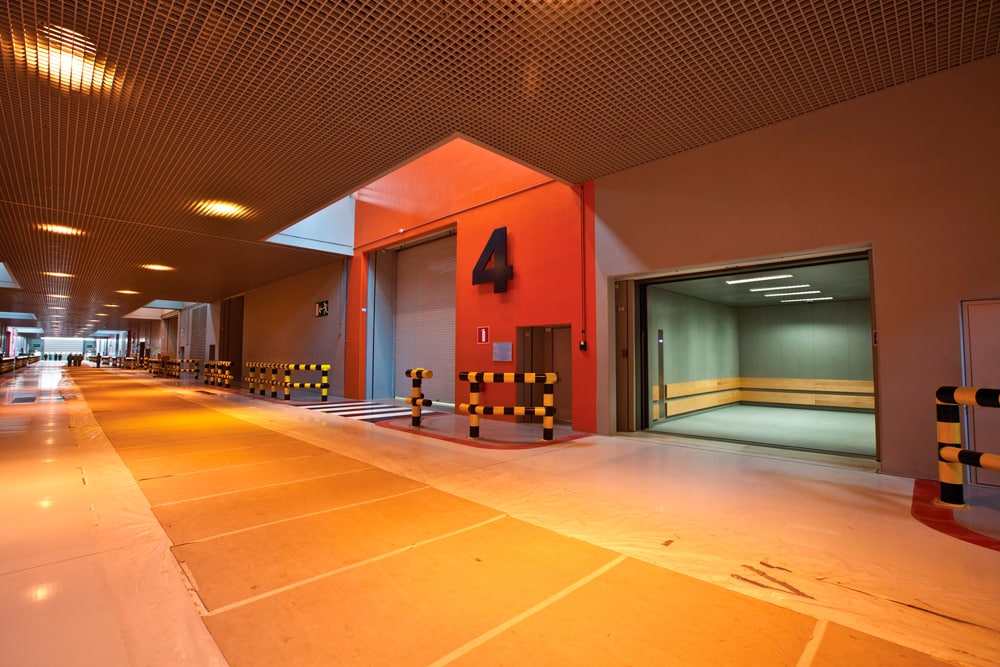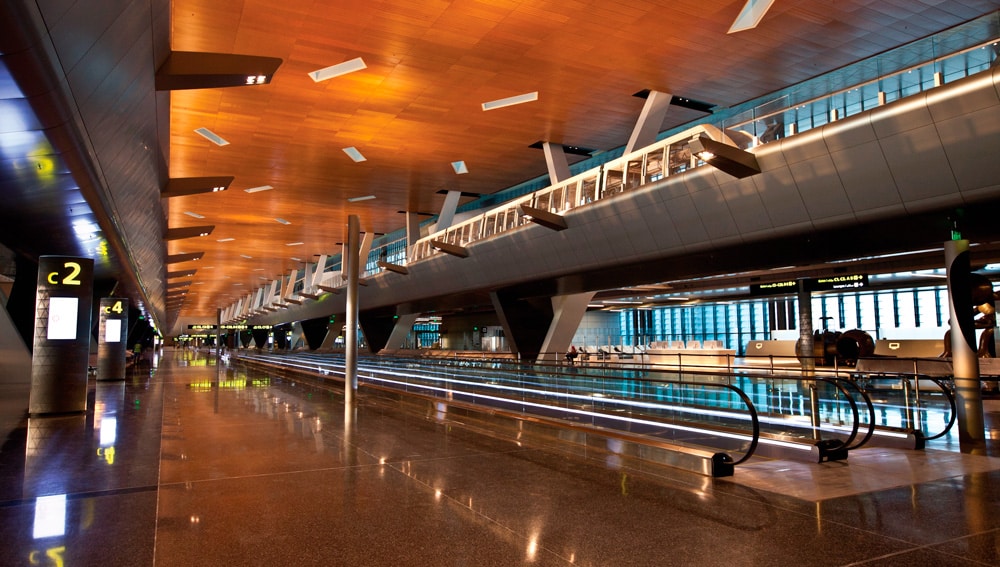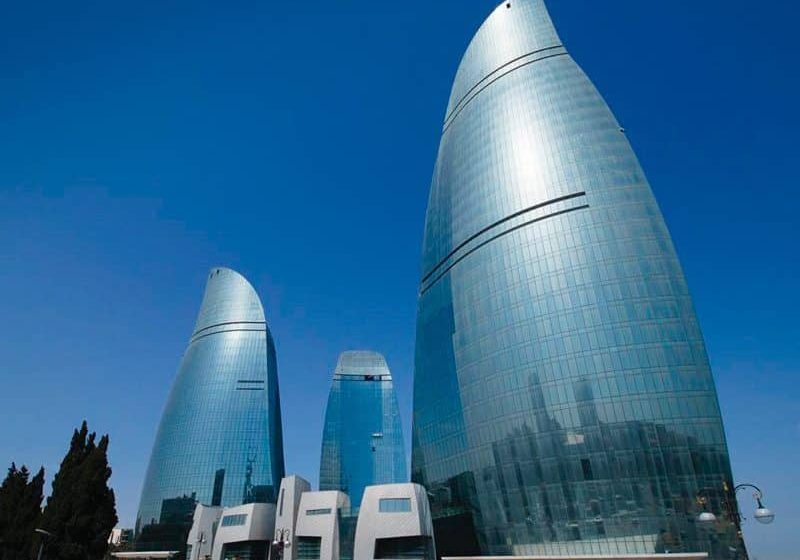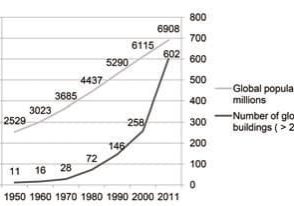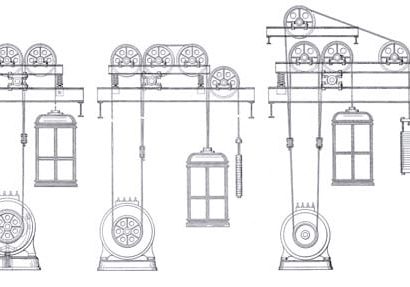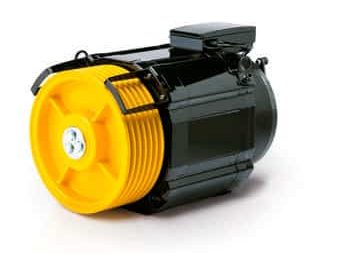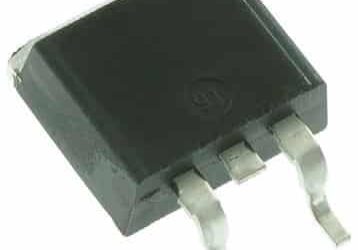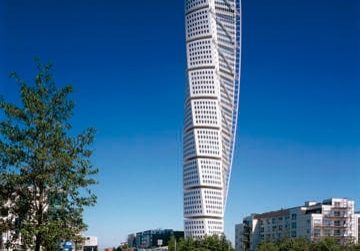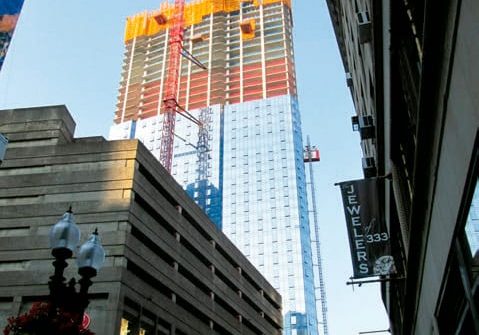Hamad International Airport, Doha
Oct 1, 2015
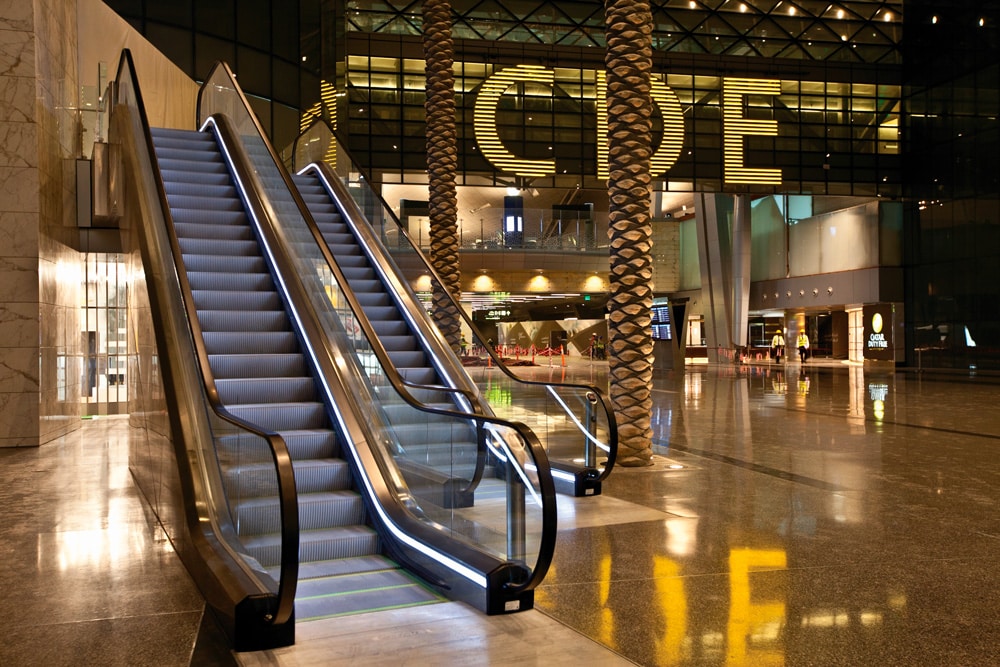
ThyssenKrupp completes mammoth task at the world’s newest international hub.
A total of 385 ThyssenKrupp Elevator elevators, escalators and moving walks transfer passengers comfortably through Hamad International Airport (HIA), located in Doha. Formerly known as New Doha International Airport, HIA was originally slated to replace the old Doha International Airport (DIA) in 2009. The airport opened on April 30, 2014, with the landing of a ceremonial Qatar Airways flight from DIA.
With a capacity to welcome 30 million passengers a year, HIA is the world’s newest international hub. It covers an area of 2,200 ha, more than half of which has been reclaimed from the sea. During construction, more than 6.2 million m3 of waste material was removed, desalinated and used as landfill – the Persian Gulf’s largest environmental project to date.
The airport is one of the largest developments in Qatar, enabling the country to play an active role in supporting air traffic and strengthening its position in the global air-travel industry. As it is Qatar’s first window to the outside world, the country has worked to make it an engineering masterpiece with a unique style that blends the beauty and technique of both modern and traditional construction.
HIA’s 600,000-m²-passenger terminal is Qatar’s biggest building. The check-in hall alone is 25,000 m2 of airy, column-free space with 138 check-in counters, 14 of which are designed as private booths. The airport’s network security systems, as well as information and communications technology, provide a comfortable, efficient and safe travel experience for passengers.
Pre-Installation and Design
The HIA project includes finishes that meet high specifications and quality standards in terms of aesthetics, materials and origin. Moreover, it called for sample submissions of all visible conveyor-system finishes. Lighting related to the conveyor systems had to meet the applicable code requirements. Since these conveyor systems are subject to round-the-clock use, the specifications called for extremely durable products.
ThyssenKrupp Elevator supplied Latitude electric traction elevators, Tugela escalators and Orinoco moving walks. The operating team, coordinating with the factories, ensured the durability and endurance of all products and components. Moreover, the project requirements called for one-year warranties on the units as a system and five-year warranties on the motors.
A central monitoring system (CMS) was also required as per project specifications. ThyssenKrupp Elevator installed one with a program called “Campus View,” which monitors the status of all units at all times. If there is an issue concerning a unit, due to internal or external factors, it appears on the CMS, and the operating team can take appropriate action immediately. The CMS also allows the operating team to direct the units by remote control, if necessary.
Assembly
Much engineering work was required to get drawings approved and come up with feasible solutions to meet the designers’ and consultants’ changing requirements while, at the same time, preserving ThyssenKrupp Elevator standards and procedures.
Procuring high-quality materials and submitting them as samples for approval was a challenge for the operating team. The materials had to comply to aesthetic, visible finish and material-quality standards, in particular: strength and durability; environmental and anti-corrosion aspects; country of origin; and certification, code-compliance and universal approval.
During the peak installation period, more than 200 onsite personnel had to accommodate the work schedule agreed upon with the client. They had to work at temperatures more than 50°C with 90% humidity.
The project also called for a great deal of skilled coordination of a number of aspects as more than 120 subcontractors worked on the site. Site-access problems that obstructed the works and several interfacing aspects regarding the elevators, escalators and moving walks had to be resolved. The numerous inspections required by the project specifications had to be arranged and approved.
Special Performances and Large Elevators
The HIA project included large freight elevators with complicated systems. They are hydraulic elevators with load capacities of 3.6, 5.5 and 7.5 T. They posed a challenge for accessing and routing to the shaft location, especially given site restrictions and work by other parties. As timing was of the essence, the operating team at HIA conducted several studies and routing plans before the material arrived onsite to make sure there would be no delays. Once the materials arrived, the routing plan had to be readjusted and improvised on several occasions to suit changing site conditions. Due to the size of these units, the operating team had to coordinate temporary storage areas with the client to ensure that they were kept in a safe environment with reduced risk of damage. Then, the elevators required a special installation procedure to ensure stability and proper operation.
During execution, safety monitoring is important to ensure teams are operating in the proper manner to avoid any near-misses or accidents. Technicians involved received specialized training, and the operating team implemented strict, efficient monitoring of all units, enabling high-risk areas to be located and preventative measures taken. Additionally, the operating team monitored the activities of others around the units to ensure that everything was done with the proper care, pausing other parties’ work if there was imminent risk. The operating team also implemented a permit system to retain control when others used the conveyor systems.
Get more of Elevator World. Sign up for our free e-newsletter.
